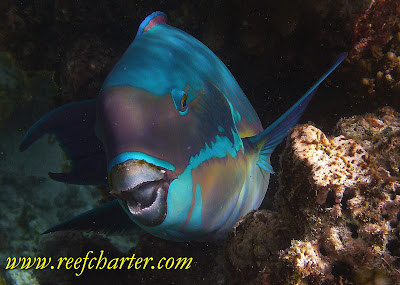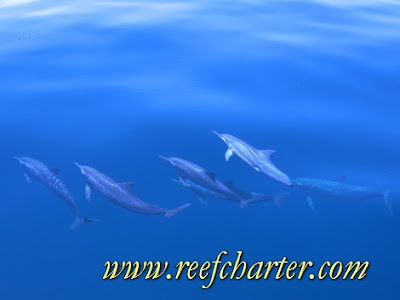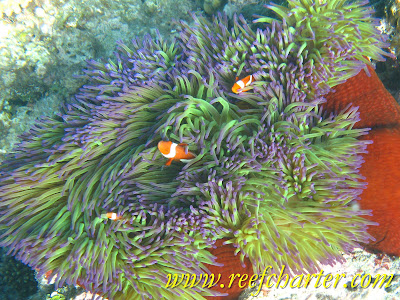
One of the most colourful fish on the Great Barrier Reef in the Parrot Fish. So named because of the parrot like beak which it uses to eat algae off coral and other organisms off corals. They are essential to the ecology of the reef and their gardening plays a pivotal part in the survival of the reef. The parrot fish feeding on the reef ensures that algae does not suffocate the reef. The coral they eat is ground up and excreted as sand.
Most of the Parrot Fish family grow to about 30-40 cm (12-16″). They release their eggs into the ocean where the eggs float until settling in the reef until they hatch.


